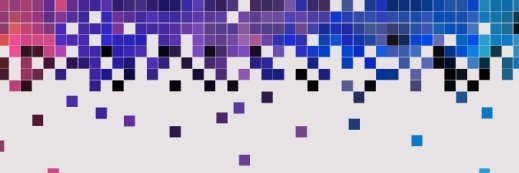
Getty Images
Why use JavaFX in 2025?
As a modern GUI framework, JavaFX is alive and kicking with a very broad community and many active projects. Here are some resources to deepen your knowledge and spark inspiration.
JavaFX has undergone a remarkable transformation since its initial introduction, evolving from an experimental UI scripting framework to a mature, feature-packed platform for developing user interfaces for desktop and cross-platform Java applications. It's clear that JavaFX, not Swing, is now the preferred choice for modern user interface development.
As we begin 2025, a check on the current state of the Java-world ecosystem shows how JavaFX has reinforced its position in a significant niche and is addressing many of the limitations that plagued its predecessor, Swing.
Long-term support and early access builds
OpenJDK and OpenJFX, the open source GitHub projects where Java and JavaFX have evolved, follow the same release cycle with two new versions per year (in March and September). Version 23 is the current latest release, and version 24 is coming in March 2025 with early access builds already available.
JavaFX is also compatible with earlier versions of the JDK; for instance, JavaFX 23 requires Java 21 or newer, which is the most recent long-term support (LTS) version of Java.
| Release | GA date | Latest version | Minimum JDK | Long-term support |
| 24 |
March 2025 |
Early access |
21 |
No |
| 23 |
September 2024 |
23.0.1 (October 2024) |
21 |
No |
| 21 |
September 2023 |
21.0.5 (October 2024) |
17 |
Yes |
| 17 |
September 2021 |
17.0.13 (October 2024) |
11 |
Until September 2026 |
Using Scene Builder with JavaFX
When a developer creates a JavaFX user interface, there is an option to take a code-only approach and construct each visual element in Java or define the layout in an XML structure in an FXML file.
For those who want to create FXML files, I recommend the Scene Builder WYSIWYG editor. Its drag-and-drop user interface lets developers design with rapid iterations. The separation of the design in an FXML file, and the logic in Java code, enables team members to quickly and easily focus on their specific development task.
Scene Builder is actively maintained and uses the latest version of JavaFX itself. Version 23.0.1 (with JavaFX 23) was released in October 2024 and can be used with Java 21 and higher.

JavaFX community
One of the key strengths of Java is its community. You find a lot of tutorials and help online for any possible question, and there is a huge number of libraries to solve almost all tasks. The same goes for JavaFX.
JFXCentral
JFXCentral, built by consultant Dirk Lemmermann, collects all JavaFX info in one central point. Here you will find the people who contribute to the JavaFX community, a long list of libraries, tutorials, real-world examples of JavaFX applications and other helpful resources.

The website itself is also created with JavaFX, based on the same code for desktop and iOS (work is ongoing for Android), only the build process is different. The codebase for this project is available on GitHub. All data of JFXCentral is managed in another GitHub public repo, meaning you can contribute your own JavaFX content or improve the existing data.
Foojay
Another community project with a lot of JavaFX content is Foojay.io, the website for the Friends of OpenJDK. This site focuses on blog posts from over 250 authors, with one to three articles per day on various topics related to the JVM. It also has a podcast on JVM- and developer-related topics, including JavaFX's framework and libraries; game development with Java, JavaFX and FXGL; and roundups of JavaFX projects and gatherings.
Books
There are many books available to learn more about JavaFX. I want to highlight two of them:
- The third edition of The Definitive Guide to Modern Java Clients with JavaFX: Cross-Platform Mobile and Cloud Development Updated for JavaFX 21 and 23 by Stephen Chin, Johan Vos and James Weaver, a massive 600-plus pages of JavaFX knowledge.
- Frontend Development with JavaFX and Kotlin by Peter Späth, a great introduction to creating desktop applications with Kotlin.
JavaFX projects
Conference sessions present all kinds of applications and frameworks, but JavaFX is typically underrepresented. This is in part because companies use it a lot for internal applications; they consider it part of internal processes or secrets or that they contain sensitive data, and so developers are not allowed to talk about it.
To help open up these discussions, a group of JavaFX community members gathered at Devoxx 2023 in Belgium to discuss some real-world use cases. These "JFX In Action" interviews showcase a wide variety of tools and applications developed with JavaFX, many of which are free to use. Examples include the following:
- General applications. PDFsam, JabRef.
- Internal company applications. Credit Europe Bank, Network tester, TGUT.
- Developer tools. Swaggerific, XPipe, SDKman UI, LogoRRR.
- Mobile app. FxCalculator.
- Java tools and libraries. FXThemes, FXComponents, Quarkus FX, FXGL, jDeploy, Conveyor.
Coding for fun
From time to time, I take up a pet project with my 14-year-old son to create an app that he hopes will make him rich someday, and meanwhile helps me learn something new.
In 2024, we started work on MelodyMatrix, an app that visualizes music by using the MIDI data received from musical instruments such as a piano. I used this project to learn Kotlin and combined it with JavaFX. Part of the code is available as open source.
We hope it can be an inspiration to visualize data in different ways and trigger more JavaFX interest as a framework to create GUI applications.
Frank Delporte is a Java Champion, software engineer, documentation writer and author who loves to write, podcast and experiment with Java and JavaFX.










